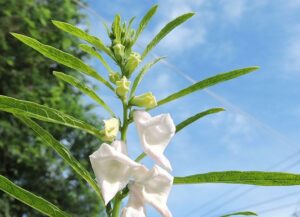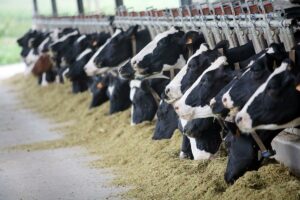Alvaro Garcia
The transition period is the most challenging time for a dairy cow. Right after calving cows start producing colostrum first and then milk in large amounts, depending on their genetic make-up. At this point in time however, they are in recovery mode from calving, and a combination of general discomfort/pain and hormonal changes results in a significant reduction of feed intake.
This mismatch between nutrient requirements for production and nutrient uptake through feed intake, results in imbalances, with the supply of energy being the more striking. One example of hormonal changes is the decreased production of insulin that leads to decreased glucose utilization by insulin-sensitive organs, which is essential for milk production. Concomitantly, body fat reserves are mobilized to supply additional energy which increases the non-esterified fatty acids (NEFAs) blood concentration.
The abundance of circulating NEFAs leads to increased availability of the product from their degradation, acetyl-CoA, which may exceed the capacity of its incorporation into the carboxylic acid cycle. As a result, end-products normally utilized in ketogenesis will build-up, such as acetone, acetoacetic acid, and beta-hydroxybutyric acid (BHBA).
L-carnitine helps to handle excessive non-esterified fatty acids
The increased circulation of NEFAs leads to triacyl glyceride synthesis later deposited in the liver. To handle the excessive NEFA availability L-carnitine is needed which is essential to transfer fatty acids into the mitochondria for their oxidation. L-carnitine is synthesized endogenously, and it is essential in the initial steps of the ß-oxidation of free fatty acids. When in short supply, all the events described above can happen leading to frequent metabolic problems in transition cows such as fatty liver and/or ketosis.
A recent experiment in Germany (Meyer et al., 2020) was designed to explore if feeding L-carnitine to dairy cows would affect lipid mobilization. Close-up Holstein dairy cows (42 days pre-calving) blocked by parity (2–5 lactations), body weight (568–1008 kg), body condition score, and fat-corrected milk yield in the previous lactation were assigned to two groups:
- Control
- L-carnitine (25 g/day of rumen-protected L-carnitine)
To balance the fat content of the L-carnitine product, the control diet obtained an equivalent amount of a fat product like that used for the rumen protection of L-carnitine. Cows were fed a partial mixed ration composed initially of 80% roughage and 20% concentrate up to one day post-calving.
The forage/concentrate ratios were varied according to the nutrient recommendations of the Society of Nutrition Physiology. The concentrate was increased from 30% to 50% up to 14 days post-calving, and from then on kept at 50:50 up to day 110 post calving when the experiment ended.
Effects of supplemental carnitine in dairy cows in peripartum period
Cows supplemented with 25 g of L-carnitine had higher milk yields and more milk fat concentration in the first week of lactation. They also had higher triacyl glyceride concentrations in plasma, which indicated increased fat oxidation efficiency. The results also showed however, that the recovery from calving, the extent of the negative energy balance, and lipid mobilization were not influenced by L-carnitine.
Furthermore, there were equal levels of fat mobilization, NEFA and BHBA concentrations in plasma which suggested that L-carnitine supplementation in this experiment did not enhance energy availability and energetic efficiency. The export of triglycerides from the liver and into the blood increased in cows supplemented with L-carnitine during the last 14 days pre-calving, which could affect the post-calving accumulation of fat in the liver.
Reference:
Meyer, J., Daniels, S.U., Grindler, S., Tröscher-Mußotter, J., Alaedin, M., Frahm, J., … Meyer, U. 2020. Effects of a Dietary L-Carnitine Supplementation on Performance, Energy Metabolism and Recovery from Calving in Dairy Cows. Animals. 10(2): 342.
© 2020 Dairy Knowledge Center. All Rights Reserved.











